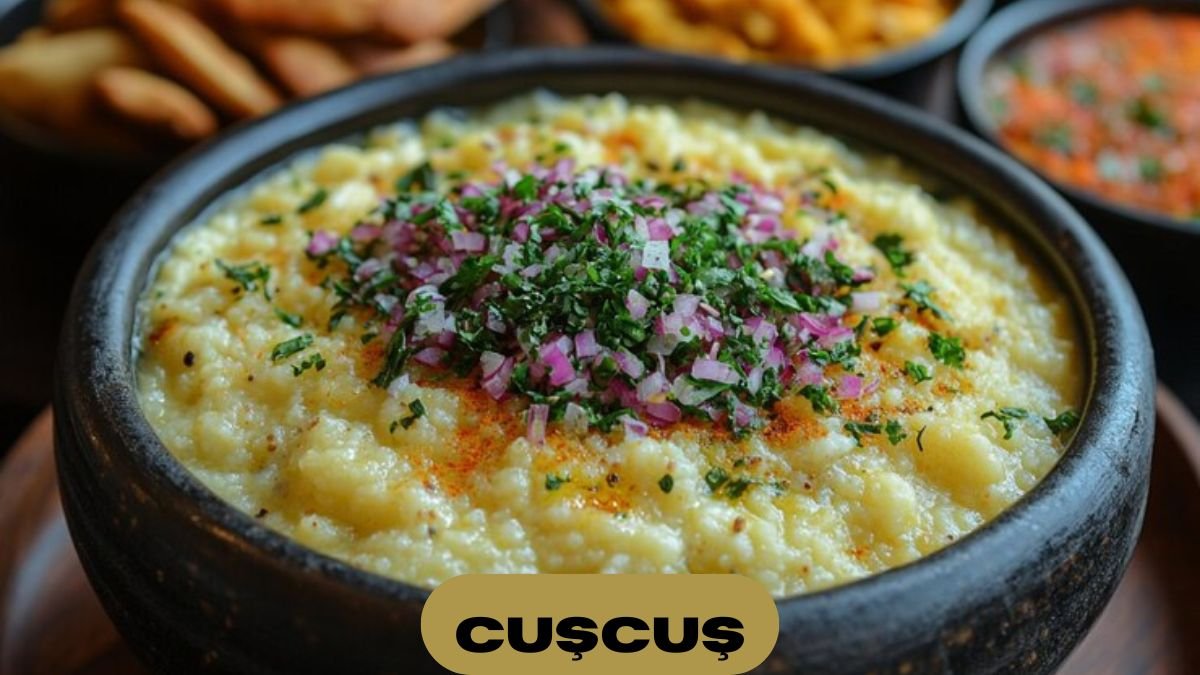Cuşcuş, also known as couscous, is a dish that has deep roots in North African cuisine, particularly in regions like Morocco, Algeria, and Tunisia. This ancient food, made from semolina wheat granules, has gained global popularity due to its versatility, ease of preparation, and nutritional benefits. In this article, we will delve into the history, preparation methods, and cultural significance of cuşcuş, while also exploring its modern-day applications in kitchens around the world.
The History of Cuşcuş
It is believed to have originated with the Berbers, an indigenous group from North Africa. Historical evidence suggests that this dish was being prepared as early as the 9th century. The word itself is derived from the Berber word “seksu,” which means “well-rolled” or “well-formed.” Traditionally, cuşcuş was made by hand, with women in the community gathering to roll semolina wheat into tiny granules. These granules were then steamed over a pot of simmering stew, allowing them to absorb the flavors of the dish.
Traditional Preparation
The traditional preparation of cuşcuş is a labor-intensive process that reflects the communal nature of North African cooking. The semolina granules are first sprinkled with water and rolled by hand to form small pellets. These pellets are then passed through a sieve to ensure uniform size. Once it is formed, it is steamed in a special pot called a couscoussier. The pot’s perforated top allows the steam from the stew or broth below to cook the cuşcuş, infusing it with rich flavors.
Cultural Significance of Cuşcuş
In North African culture, It is more than just a dish; it is a symbol of hospitality and community. It is often served at large family gatherings, weddings, and religious celebrations. In Morocco, for example, It is traditionally prepared on Fridays, the holy day in Islam, and shared with family and neighbors. The communal aspect of preparing and eating cuşcuş reinforces social bonds and reflects the importance of food in bringing people together.
Health Benefits
Cuşcuş is not only delicious but also offers several health benefits. It is a good source of carbohydrates, providing energy for the body. Made from semolina wheat, It contains dietary fiber, which aids in digestion and helps regulate blood sugar levels. It is also low in fat and contains some protein, making it a balanced addition to a meal. Additionally, It is rich in selenium, an antioxidant that supports the immune system and promotes heart health.
Modern Variations
While traditional It is made from semolina wheat, modern variations have emerged to cater to different dietary preferences and culinary trends. Whole wheat it is popular among those looking for a higher fiber option, while gluten-free versions made from corn, rice, or quinoa are available for those with gluten sensitivities. Additionally, instant cuşcuş, which requires only a few minutes of steaming or soaking, has become a convenient option for busy cooks.
Cuşcuş in Global Cuisine
Cuşcuş has transcended its North African origins to become a beloved dish in many parts of the world. In France, It is one of the most popular dishes, often served with a variety of meats and vegetables. In the Mediterranean, it is commonly paired with seafood, while in the Middle East, it is often served with lamb or chicken. The versatility of it makes it an ideal base for a wide range of flavors and ingredients.
How to Cook Cuşcuş at Home
Cooking it at home is simple and requires minimal ingredients. To prepare it , you will need:
- 1 cup of it
- 1 cup of water or broth
- 1 tablespoon of olive oil or butter
- A pinch of salt
Here’s how to make it:
- Boil the Liquid: In a saucepan, bring the water or broth to a boil. Add the olive oil or butter and salt.
- Add it : Remove the saucepan from the heat and stir in the cuş cuş. Cover the pan and let it sit for about 5 minutes.
- Fluff : After 5 minutes, use a fork to fluff the cuşcuş, breaking up any clumps. Serve it hot as a side dish or as a base for a main course.
Pairing Cuşcuş with Other Dishes
Cuşcuş is incredibly versatile and can be paired with a variety of dishes. It works well with stews, grilled meats, roasted vegetables, and even salads. For a traditional North African meal, serve it with a hearty lamb or chicken tagine. For a Mediterranean twist, pair it with grilled fish and a side of sautéed greens. The neutral flavor of cuşcuş allows it to complement a wide range of cuisines and ingredients.
Cuşcuş: A Dish for All Seasons
One of the reasons It is so beloved is its adaptability to different seasons and occasions. In the winter, it can be served as a comforting side dish with rich, warming stews. In the summer, it can be used as a light and refreshing base for a salad, mixed with fresh herbs, vegetables, and a citrus dressing. Cuşcuş’s ability to absorb flavors makes it an ideal canvas for both simple and complex dishes.
Conclusion:
Cuşcuş is more than just a grain; it is a culinary tradition that has stood the test of time. Its rich history, cultural significance, and versatility in the kitchen make it a beloved dish around the world. Whether you are enjoying it as part of a traditional North African meal or experimenting with new flavors and ingredients, It offers endless possibilities for delicious and nutritious meals.
FAQs
What is cuşcuş made of?
It is typically made from semolina wheat, though modern variations may use other grains like corn, rice, or quinoa.
Is cuşcuş gluten-free?
Traditional it can be made from semolina wheat contains gluten. However, gluten-free versions made from alternative grains are available.
How do you store leftover cuşcuş?
Leftover of it can be stored in an airtight container in the refrigerator for up to three days. Reheat it by steaming or microwaving with a little water.
Can cuşcuş be served cold?
Yes, it can be served cold, often as a base for salads mixed with vegetables, herbs, and dressing.
What are some popular dishes made with cuşcuş?
Popular dishes include Moroccan lamb tagine with it , Mediterranean couscous salad, and Tunisian couscous with fish.








